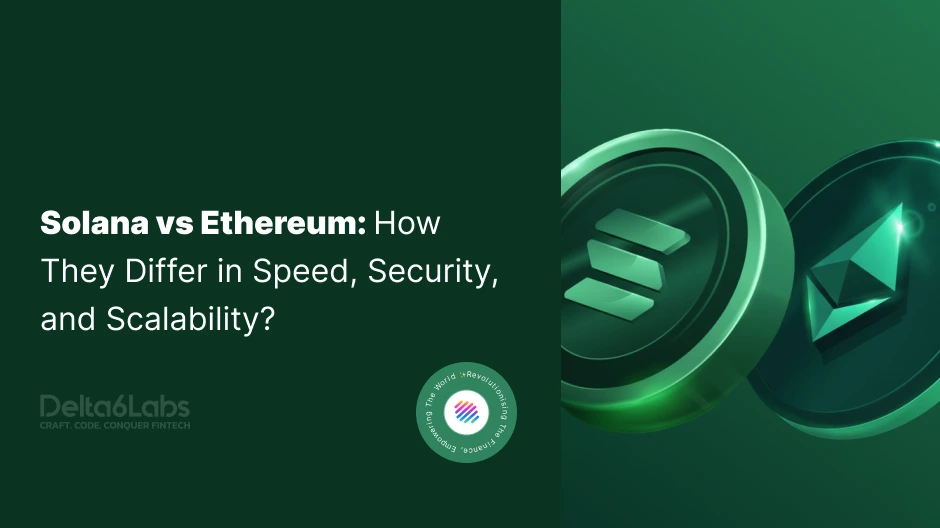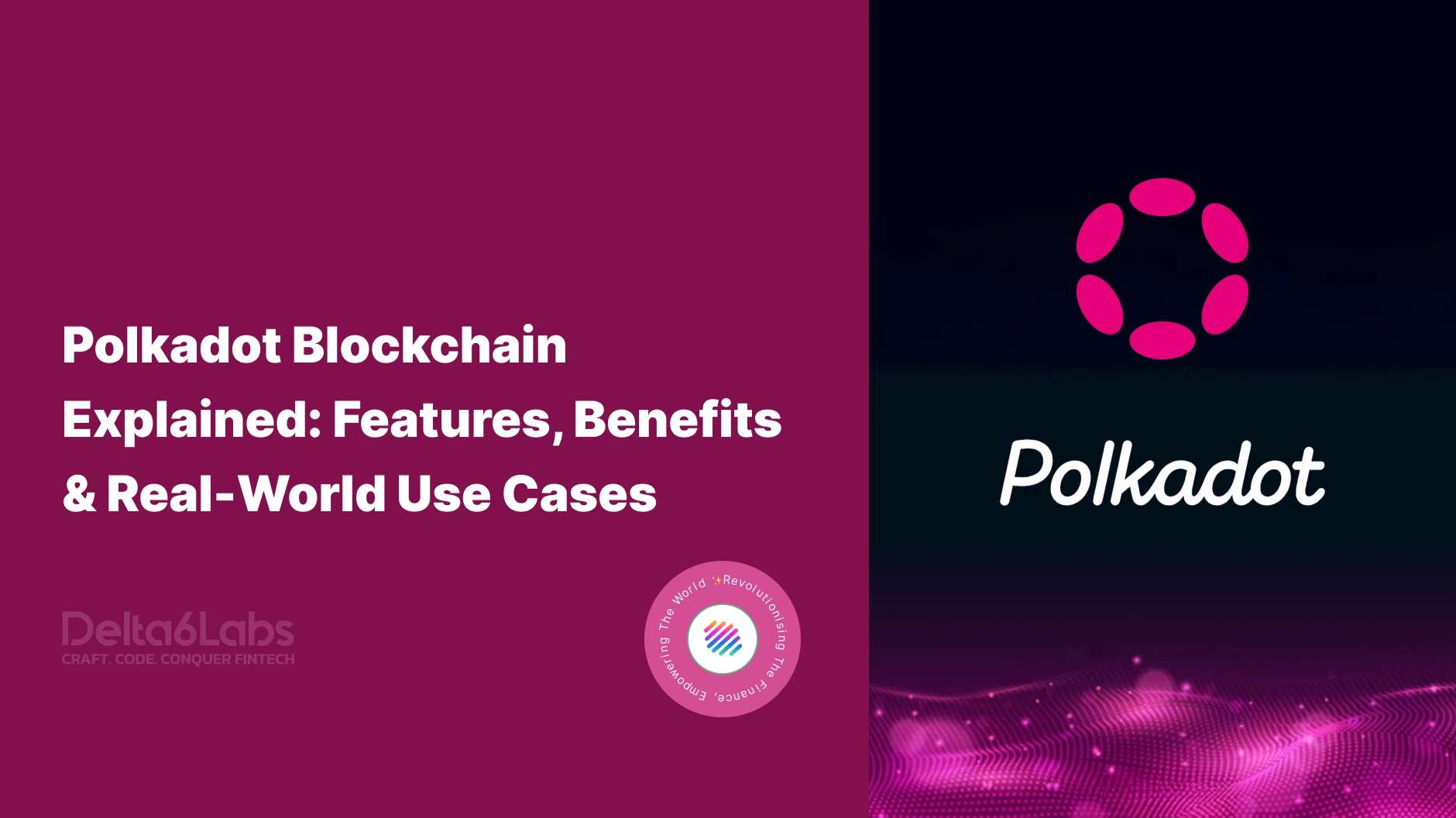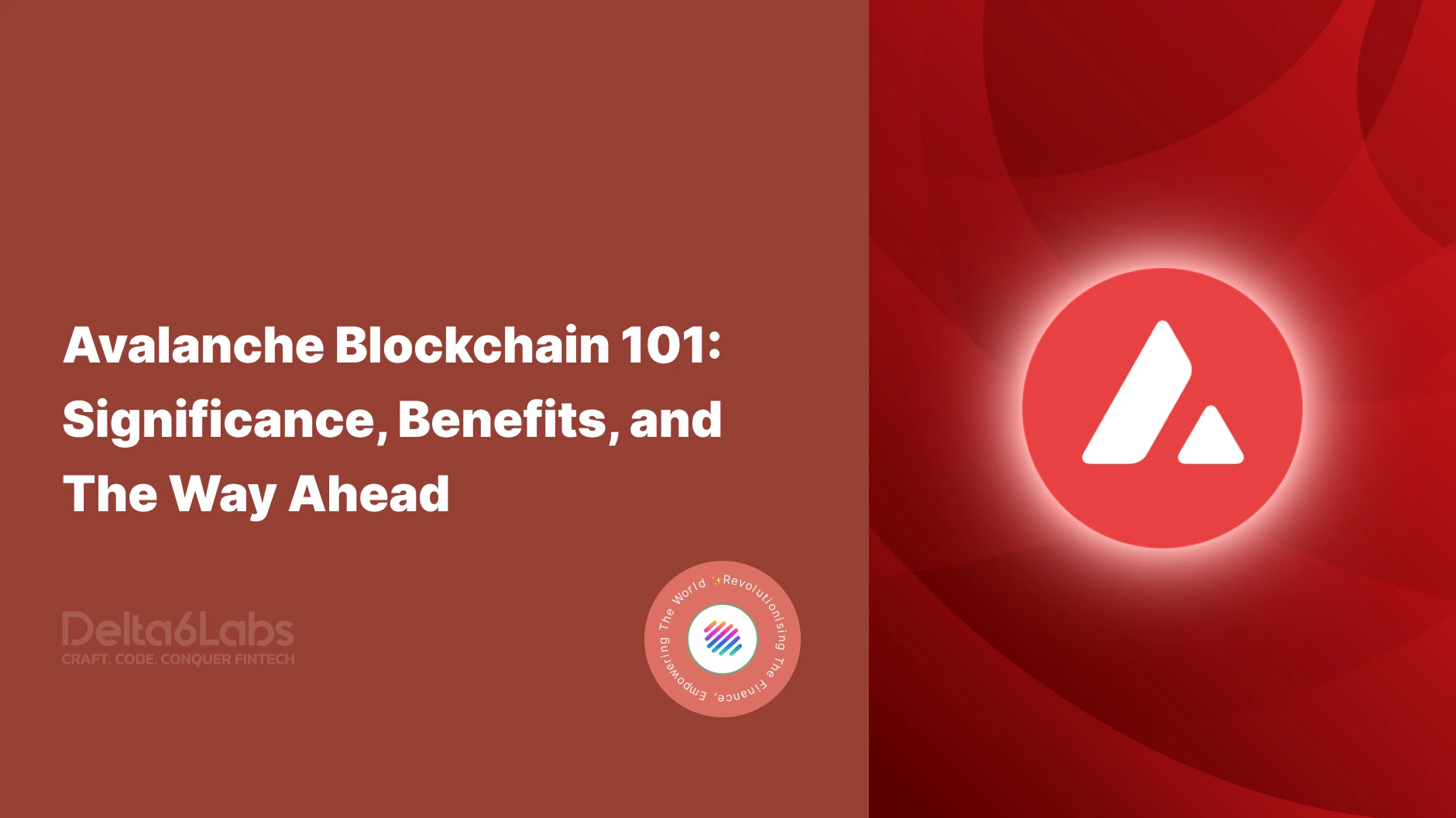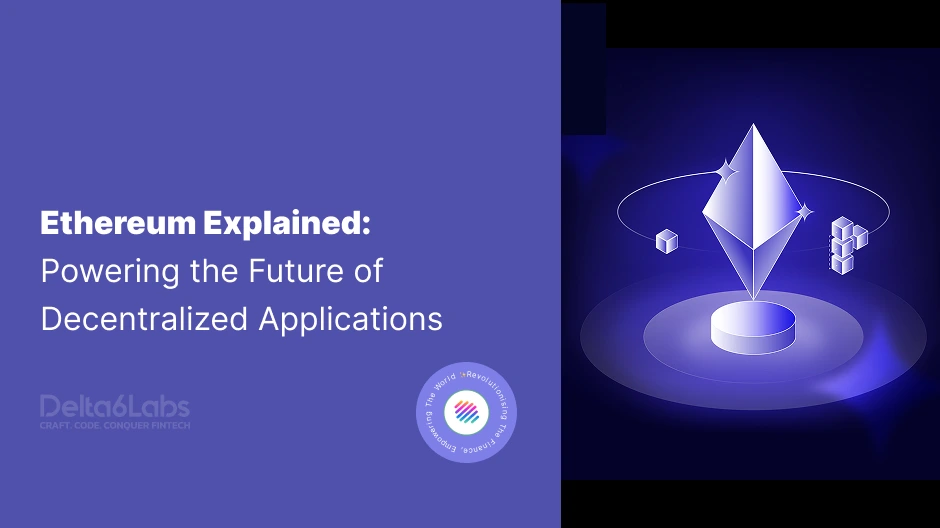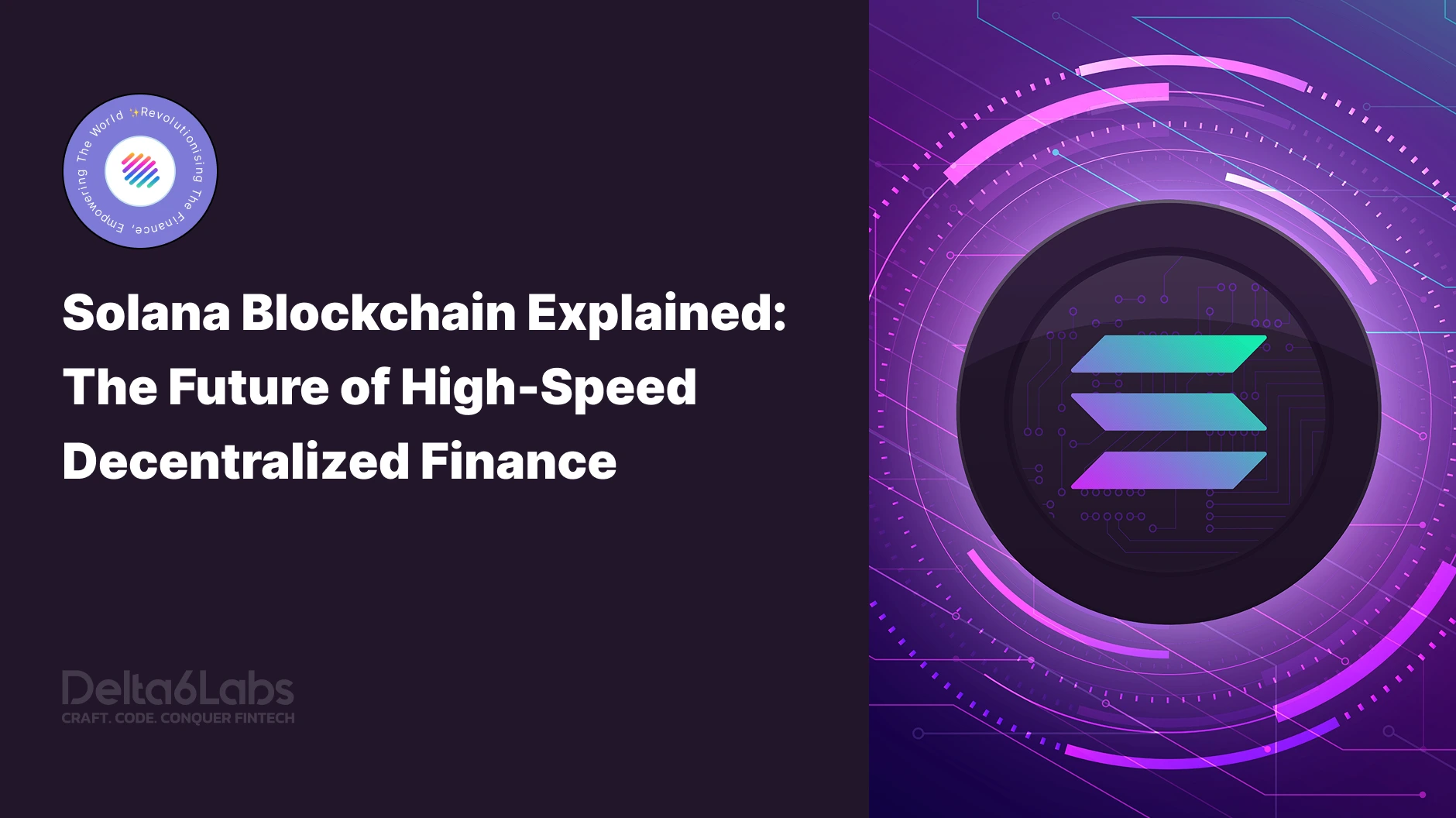Solana vs Ethereum: How They Differ in Speed, Security, and Scalability?
Table of Contents
Key Takeaways
- With its robust Proof of Stake consensus and mature ecosystem, Ethereum remains the industry benchmark for security, reliability, and developer adoption.
- Solana’s hybrid Proof of History and Proof of Stake model enables lightning-fast transactions at a fraction of Ethereum’s cost, ideal for real-time applications and high-frequency trading.
- Ethereum boasts the largest DeFi and NFT ecosystem, while Solana is rapidly evolving as a hub for GameFi, dApps, and scalable Web3 solutions.
- Ethereum scales through Layer 2 solutions like Arbitrum and zkSync, whereas Solana achieves native scalability via its high-performance monolithic architecture.
- Businesses seeking security, interoperability, and ecosystem trust should choose Ethereum, while those prioritizing speed, affordability, and user experience may find Solana the better fit.
Since the introduction of Bitcoin, blockchain technology has gained immense popularity worldwide. To overcome the shortcomings of Bitcoin, various alternative blockchains have been developed, including Ethereum, Solana, Cardano, and Polygon. Each blockchain has distinct features and serves different purposes.
For example, Bitcoin uses the Proof-of-Work (PoW) consensus mechanism, whereas Ethereum utilizes the Proof-of-Stake (PoS) consensus mechanism. The PoS mechanism is less energy-consuming than the PoW mechanism. There is another famous blockchain, Solana, which has gained popularity over the last few years. Many NFT and dApp creators use the Solana blockchain, as is also the case with the Ethereum blockchain. In this blog, we will examine the advantages and limitations of two major blockchains in the world: Ethereum and Solana.
About Ethereum Blockchain
Ethereum is an open blockchain platform launched in 2015 by Vitalik Buterin. Since then, it has continued to rise to new heights of popularity. Its native token, also known as Ethereum, is one of the most popular cryptocurrencies in the world, and second in market capitalization after Bitcoin. Many decentralized applications have been created using the Ethereum blockchain. Initially, Ethereum also used the PoW mechanism. However, after facing backlash due to the environmental impact of the same, the token holders used their governance rights and switched from the PoW to the PoS mechanism.
Advantages of Ethereum Blockchain
Ethereum has numerous advantages in the decentralized finance (DeFi) landscape, some of which are as follows:
Self-executing Smart Contracts
Currently, Ethereum is widely regarded as the premier platform for smart contracts, which helps numerous decentralized applications thrive.
Continuous Upgrades
Ethereum is under continuous upgrades with the help of its community, which contributes in various ways to scale up the platform.
Decentralization
Ethereum operates through a global network of nodes, ensuring that no single entity controls the network. This decentralization allows Ethereum to be resilient against censorship, manipulation, and centralized failures. Additionally, all decisions related to the governance of the Ethereum ecosystem are taken by the community itself through voting, thereby promoting democratization.
Large Community
Ethereum has the largest and most active developer community in the blockchain industry. This fosters ongoing innovation, improves security, and offers a wide range of tools, libraries, and frameworks (e.g., Solidity, Hardhat, Truffle) to facilitate dApp development.
Non-fungible Tokens (NFTs)
Ethereum’s ERC-721 and ERC-1155 standards enable the creation and trading of NFTs, which have transformed digital ownership, collectibles, art, and gaming. Marketplaces such as OpenSea and Rarible primarily operate on Ethereum.
Energy Efficient
Ethereum uses the Proof-of-Stake consensus protocol, which only allows participants who are willing to stake their Ethereum to participate in the validation process. Hence, the number of participating nodes is decreased, which saves energy.
Interoperability
Ethereum’s widely adopted token standards (ERC-20, ERC-721) enable seamless interaction among wallets, exchanges, and dApps. This standardization allows developers to create interoperable applications with minimal friction.
Understanding Solana Blockchain
Solana is a high-performance blockchain network created for speed, scalability, and low transaction costs. It employs a unique Proof of History (PoH) combined with Proof of Stake (PoS) to achieve rapid transaction processing, with a throughput of 65,000 transactions per second (TPS) at significantly lower fees.
Solana is ideal for decentralized applications (dApps), DeFi platforms, and NFTs due to its fast confirmation times and high throughput. It supports smart contracts and has gained significant adoption among developers and users. Despite occasional network outages, Solana remains a strong competitor to Ethereum, particularly for projects that require high-speed execution and low-cost operations.
Pros of Solana
Like Ethereum, Solana also has numerous advantages in the decentralized Finance (DeFi) landscape. Some of them are as follows:
Unique Consensus Mechanism
The Solana blockchain utilizes a combination of Proof of History (PoH) and Proof of Stake (PoS) consensus mechanisms, which is an energy-saving consensus protocol.
Low Transaction Fees
Solana offers extremely low gas fees, typically costing just fractions of a cent per transaction, often less than $0.001. This affordability makes it highly attractive for users and developers building decentralized applications (dApps), DeFi platforms, and NFT marketplaces, where high volume and cost-efficiency are crucial.
High Scalability
Solana’s design is inherently scalable, meaning it does not depend on Layer 2 solutions or sharding. Its throughput increases with improvements in network bandwidth and hardware, enabling it to support millions of users and transactions without experiencing network congestion.
Supports NFTs and Gaming
Solana’s fast transactions and low fees make it ideal for NFT platforms and blockchain gaming. Marketplaces like Magic Eden and games such as Aurory flourish on Solana because users can mint, buy, and trade NFTs quickly and affordably.
Environment-Friendly
Solana blockchain employs a unique combination of Proof of History and Proof of Stake consensus protocol, which saves a lot of energy as compared to other protocols, such as the PoW mechanism.
Ethereum vs Solana Blockchain: A Comparative Study
Here is a table comparing Ethereum and Solana:
| Features | Ethereum | Solana |
| Consensus Mechanism | Proof of Stake (PoS) | Proof of Stake + Proof of History |
| Average Transaction Speed (ATP) | 15–30 TPS (Transactions Per Second) | 65,000 TPS (theoretical), 3,000–5,000 TPS (real-world) |
| Block Time | 12 seconds (approximately) | 400 milliseconds (approximately) |
| Average Transaction Fee (2025) | $0.50–$2.00 (can vary with network load) | ~$0.00025 per transaction |
| Smart Contract Language | Solidity, Vyper | Rust, C, C++ |
| Ecosystem Size | Largest : supports DeFi, NFTs, DAOs, Layer 2s (e.g., Arbitrum, Optimism) | Rapidly growing : strong DeFi and GameFi ecosystems |
| Total Value Locked (TVL) | $45+ billion (2025 est.) | $8+ billion (2025 est.) |
Build Your Next Blockchain Project with Delta6Labs
Whether you’re looking to develop a high-performance dApp on Solana or a secure DeFi platform on Ethereum, Delta6Labs has the expertise to turn your vision into reality. Our team specializes in custom blockchain development, smart contract solutions, and multi-chain integration, helping businesses leverage the full potential of Web3. Partner with us to build scalable, secure, and future-ready blockchain applications.
Final Words
Both Ethereum and Solana possess unique strengths that cater to different needs within the blockchain ecosystem. Ethereum is the most established smart contract platform, renowned for its robust security, decentralization, and extensive developer community. It powers most decentralized finance (DeFi) and non-fungible token (NFT) projects and continues to evolve through scalability upgrades, such as Layer 2 solutions.
In contrast, Solana offers unmatched speed and low transaction fees, making it ideal for high-frequency applications like gaming and NFT trading. However, it has faced concerns regarding centralization and network outages.
At the end, the choice between Ethereum and Solana depends on a project’s priorities: security and decentralization versus speed and affordability. Many developers are now exploring multi-chain strategies to leverage the strengths of both platforms.
Frequently Asked Questions
Disclaimer:
The information on this blog is for knowledge purposes only. The content provided is subject to updates, completion, verification, and amendments, which may result in significant changes.
Nothing in this blog is intended to serve as legal, tax, securities, or investment advice of any investment or a solicitation for any product or service.
